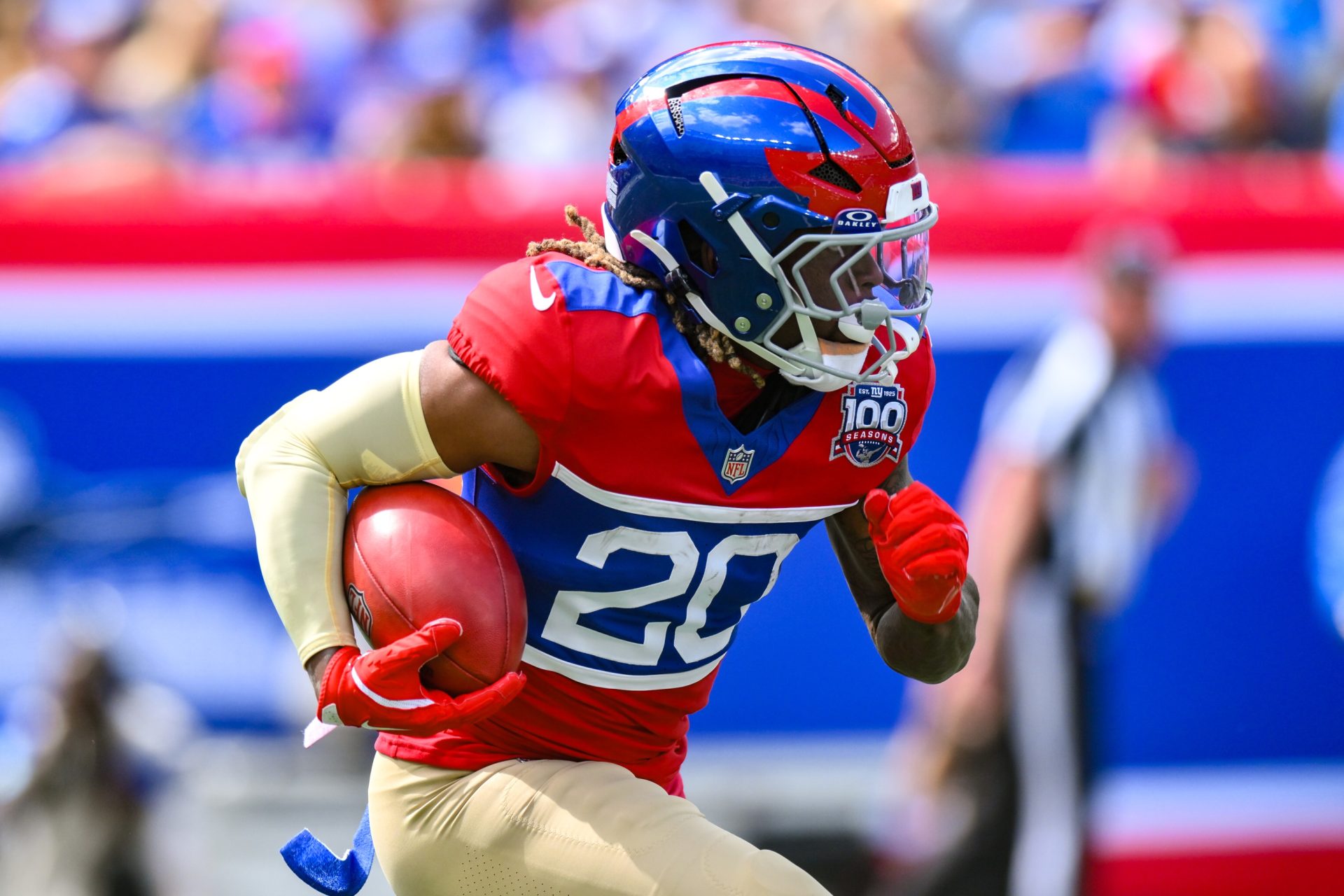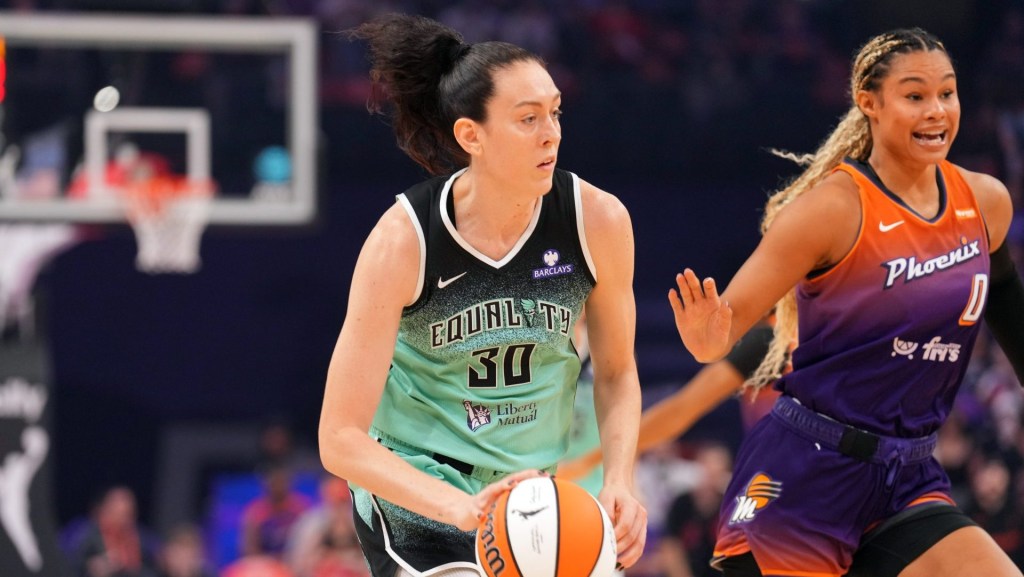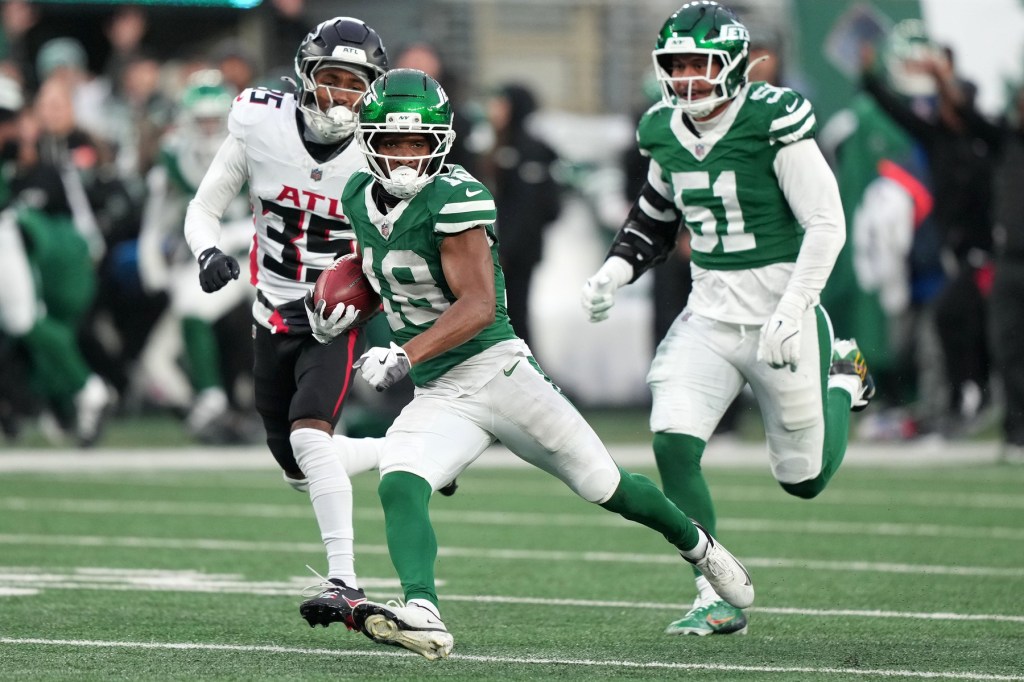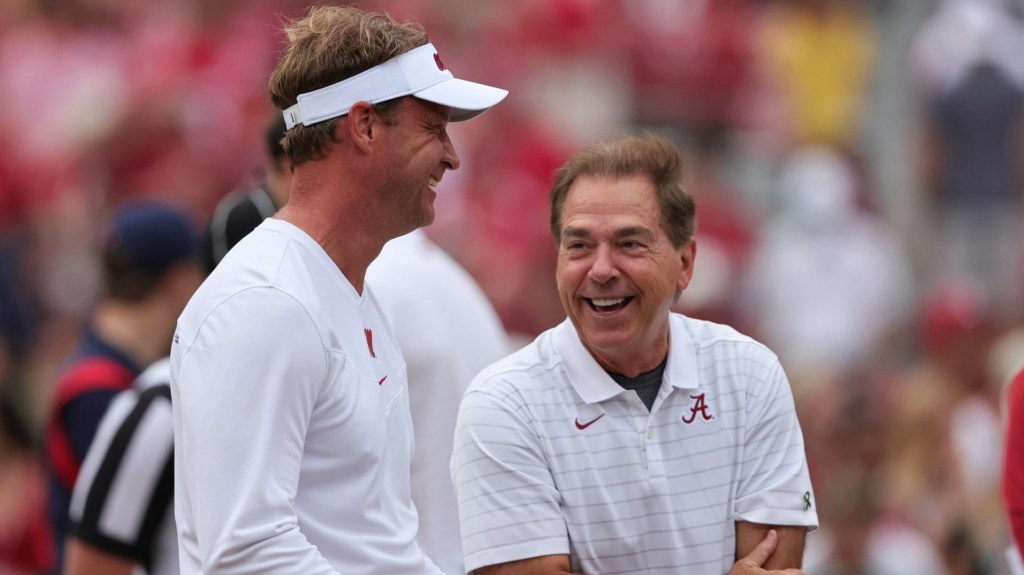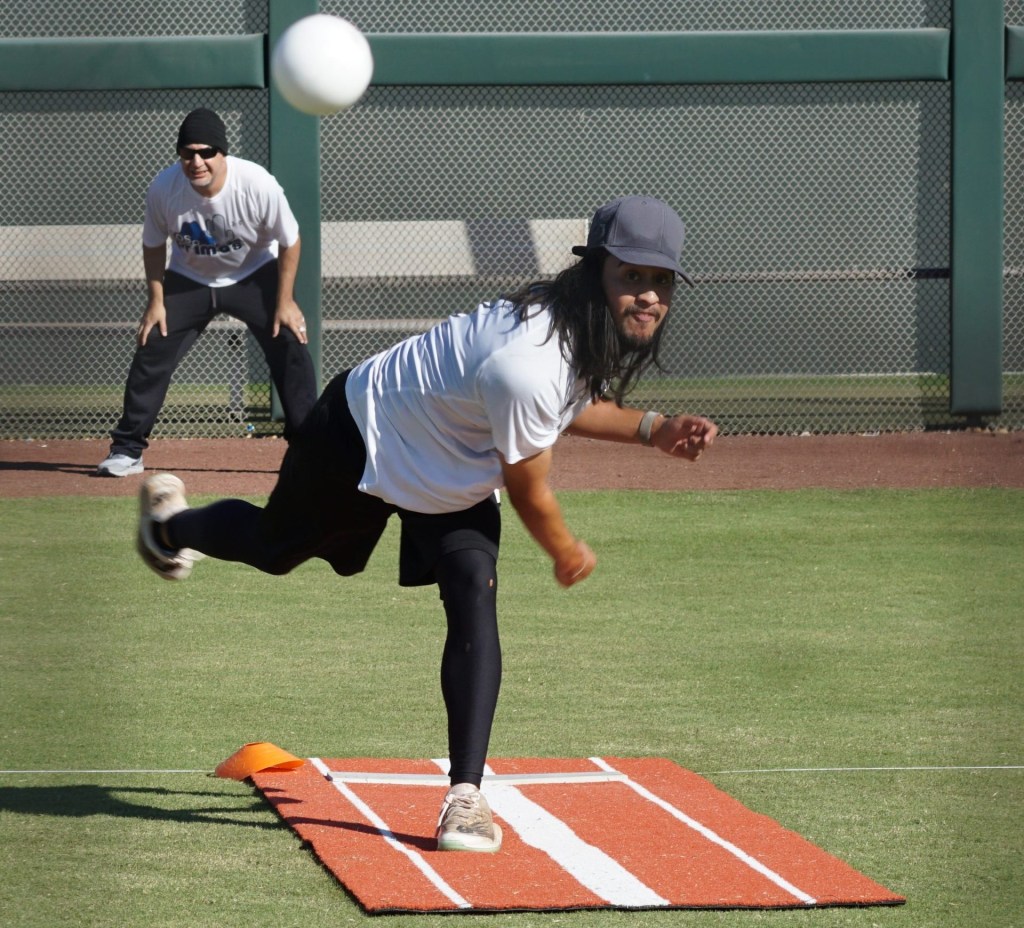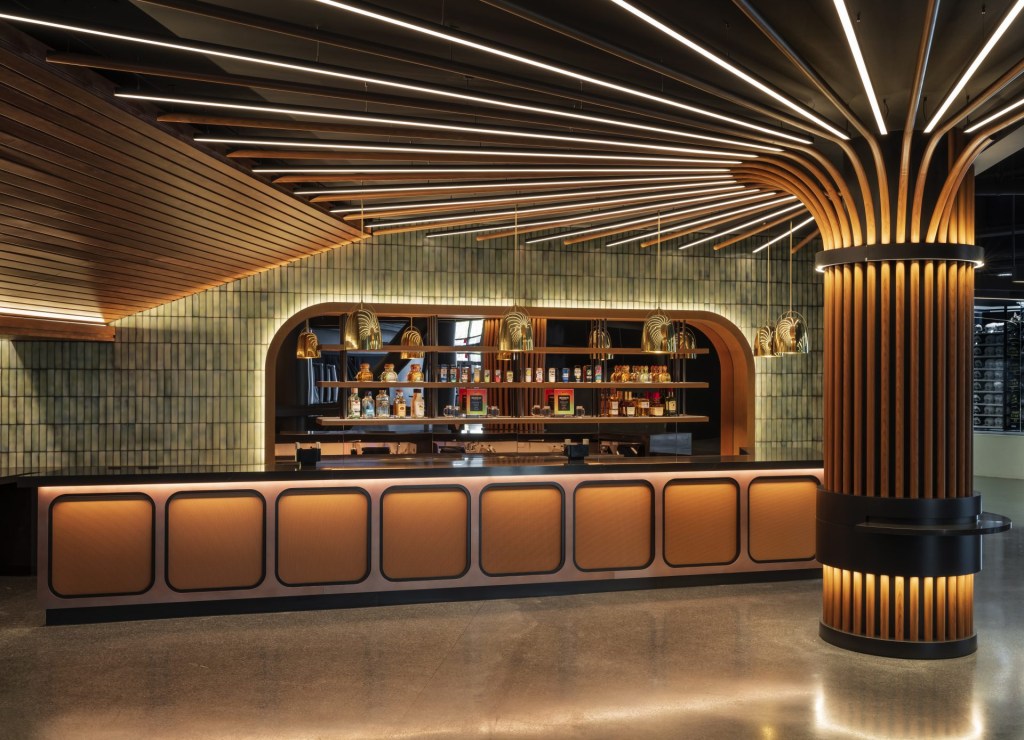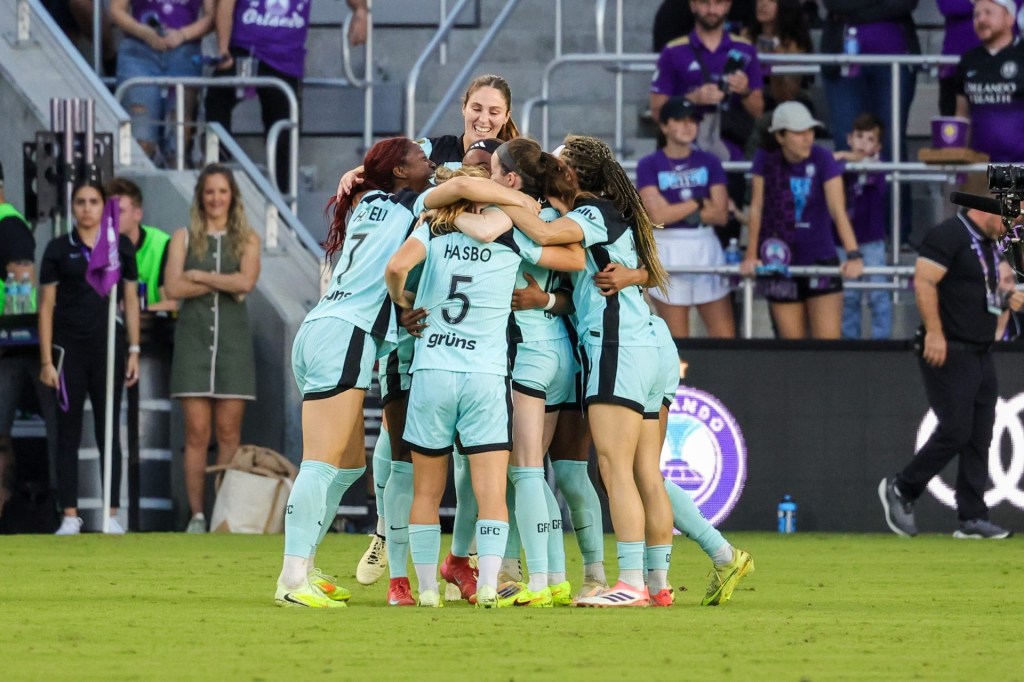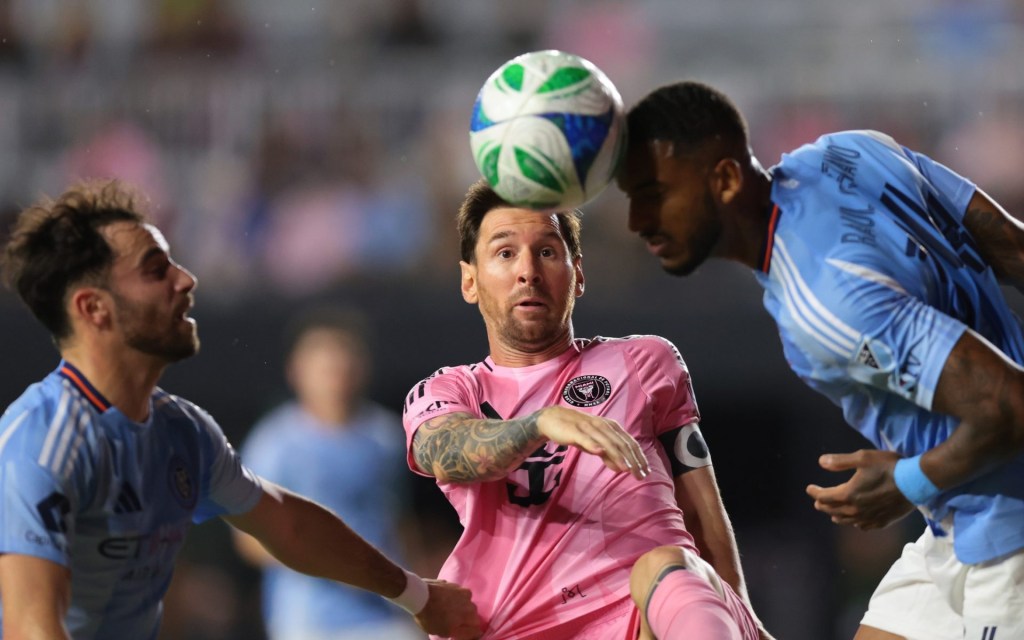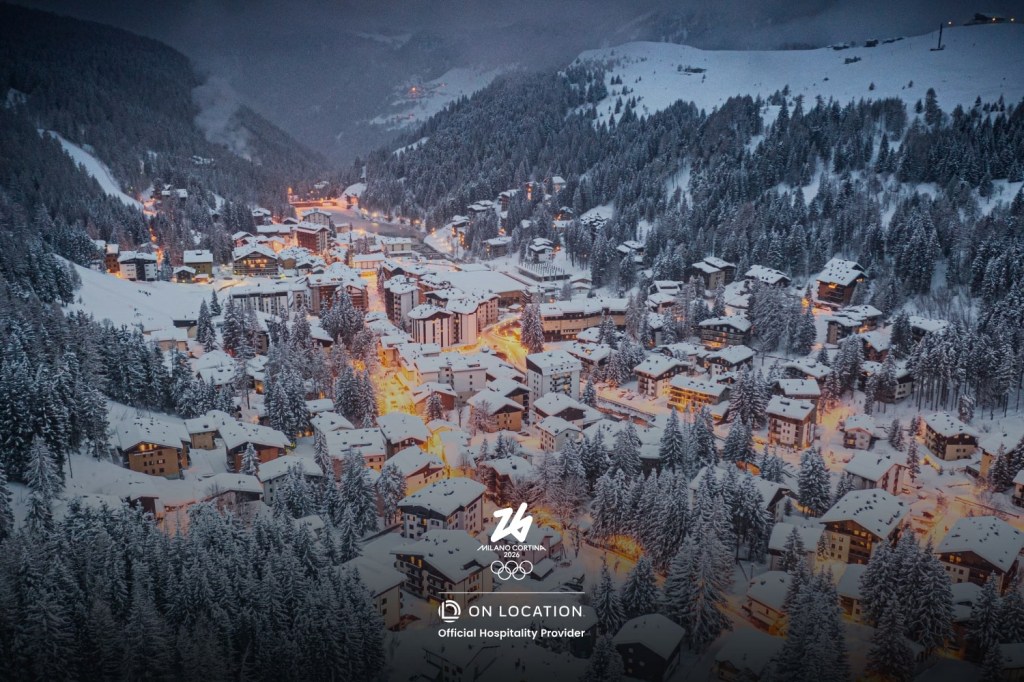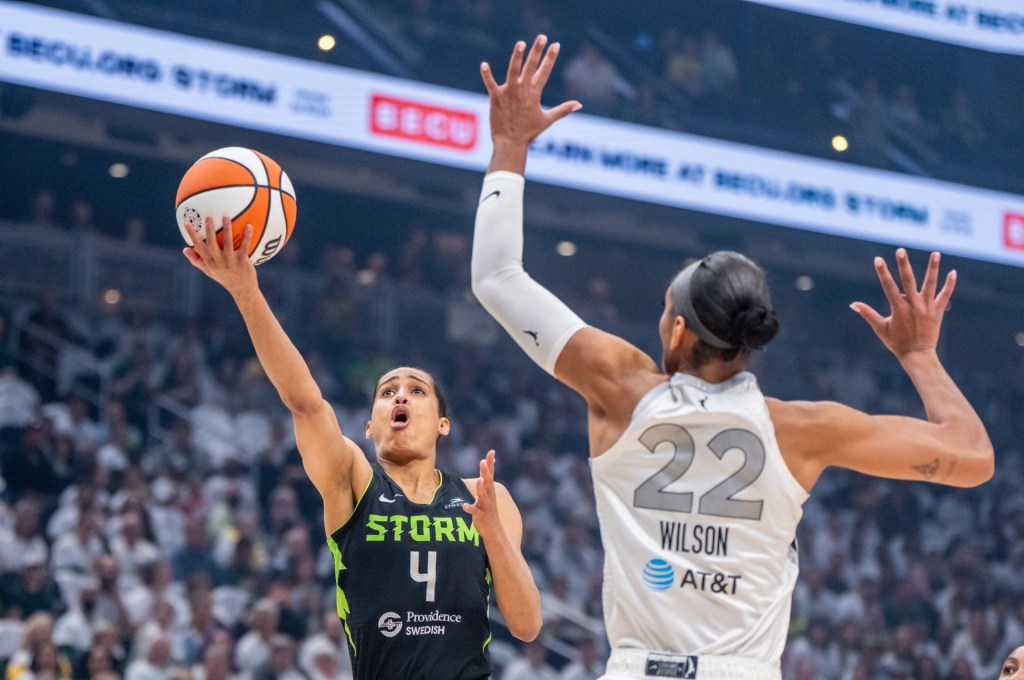In July, the Premier Lacrosse League went retro. For its fourth-annual Throwback Weekend in Chicago, the league shelved its usual uniforms and rolled out eight different sets of old-school alternates—the kind of mesh-heavy, neon-bright, logo-proud, Champion-brand looks you’d expect to see in a grainy SportsCenter highlight from the ’80s, ’90s, or early 2000s.
The California Redwoods played in white-and-yellow tops stamped with a vintage-looking cartoon brown bear, the Carolina Chaos adopted a more traditional NC State–inspired pattern, and the Maryland Whipsnakes went maximalist, with triple-shoulder stripes in the iconic state-flag colors.
Just one footnote: The PLL didn’t exist until 2018. These weren’t artifacts unearthed in an equipment closet. They were “fauxbacks”—made-up throwbacks, a nostalgia play for an era that the seven-year-old league never actually played through.
When PLL president Paul Rabil instituted Throwback Weekend in 2022, he took strategies from just about every league and sport—including WWE, college football, and Minor League Baseball. The fauxbacks, he tells Front Office Sports, represented a larger effort to unify the league after its 2020 merger with Major League Lacrosse.
He had precedent to riff on history. The anachronistic fauxback trend started in earnest in 2012 (alongside the rise of Throwback Thursday on social media) when the Tampa Bay Rays—a team that joined MLB in 1998—unveiled their own 1979-inspired powder blue and yellow fauxback for a “Turn Back the Clock” game against the Detroit Tigers.
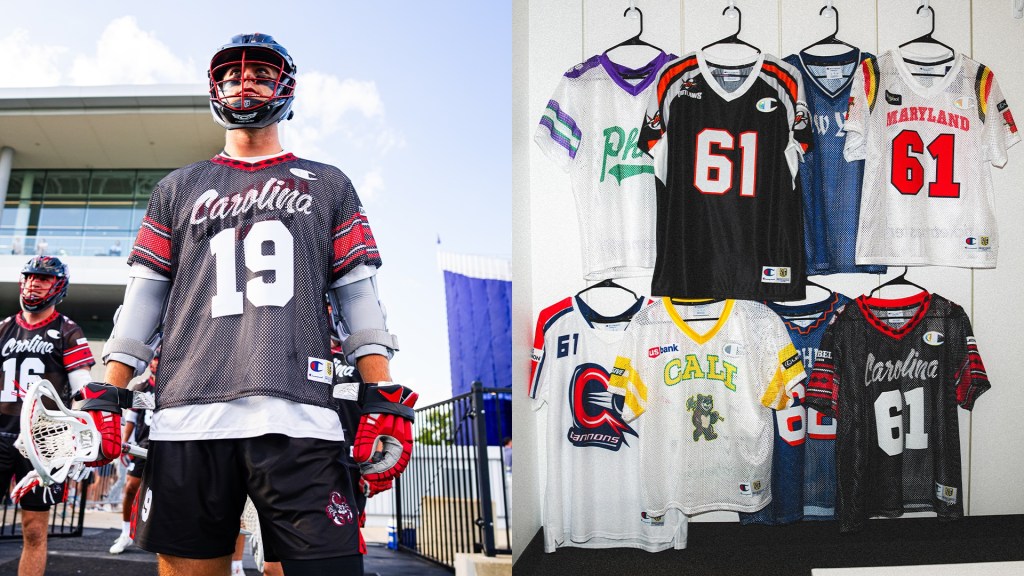
Since then, franchises large and small have gone all in. A handful of NFL teams—most recently, the Pittsburgh Steelers and Green Bay Packers—have tapped into their deep histories with modified historical looks thanks to recently lifted helmet-design restrictions. Some NHL and AHL teams have concocted alternate sweaters representing a past that predates them, and Minor League Baseball teams have imagined all kinds of retro threads to match their affiliate team’s color scheme and city’s history.
Creating a fake historical uniform is also a multi-pronged economic and aesthetic opportunity—to expose and shake up the brand, create new merchandise, and engage a wider range of fans.
“It just gives a newer club the opportunity to experiment and open up the marketing playbook,” says Ryan Foose, a sports graphic designer. “How can we really have some fun with this and dig into things that we didn’t think were quite possible at any point in time until now?”
The term “fauxback” splits into three categories, Uni Watch editor Phil Hecken tells FOS.
The first is the “wholecloth original,” like the Rays’ pastel-accented flashback to nowhere—a uniform untethered to any actual team history. This subset is his favorite and the most aesthetically pleasing kind of fauxback because it “represents a very specific time and place.” Hecken says of the Rays’ look, “It was a fantastic idea for a team that’s relatively young, even if they were basically stealing the uniform design from the [San Diego] Padres.”
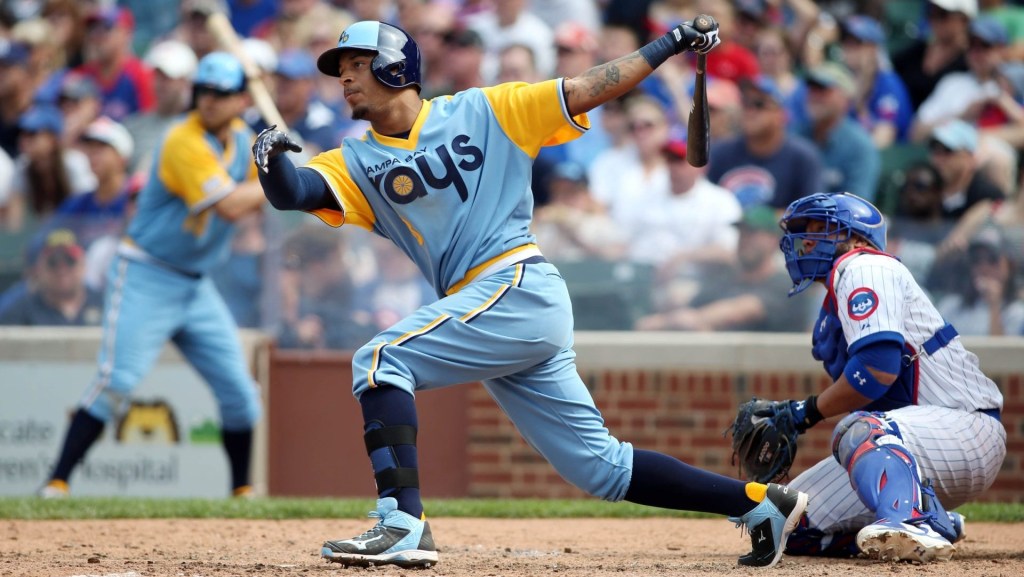
The second kind is the “Franken-Uni,” a mash-up of elements from multiple eras, which the New York Giants tried in 2024. In honor of the franchise’s 100th anniversary, the team played its home opener in its “Century Red” uniform, which consisted of tan pants and red socks with blue and white stripes to reflect the team’s inaugural 1925 season; red jersey tops with thick blue accents from its 1933 championship appearance; and a winged helmet (similar to the Michigan Wolverines) to honor the 1938 championship team.
The impetus for the combined jersey was less about aesthetics than paying homage to the earliest Giants teams that laid the foundation for the franchise. But because NFL jerseys before the 1940s had a very different look and feel (the 1933 team wore long-sleeve shirts, for example), the combination fauxback also made practical sense. Working closely with Nike and the NFL, the design team ultimately spent two years building mock-ups, tinkering with assets, and getting final approvals ahead of its spring unveiling.
“It’s easy for us to lean in to the four recent Super Bowls,” says Nilay Shah, the Giants’ SVP of marketing and brand strategy. “But this was an opportunity for us to explain to people that maybe aren’t as familiar with the Giants’ rich history all of the great stuff that was prior to the more recent Super Bowls.”
The third category of fauxback is the most popular: a faithful reproduction of an old-school uniform adjusted to meet the league’s current uniform codes. Until 2022, NFL teams were restricted to wearing only one helmet, which meant putting together an aesthetically pleasing fauxback that could convey a consistent history wasn’t easy. Consider the fauxback Washington wore in 2016, which featured a Native American logo that didn’t match the helmet logo’s face or direction. Similarly, the team’s purple-hued jersey and tan pants clashed with the helmet’s natural burgundy dome.
With the limitation now gone, teams including the Packers have taken advantage. This summer, they unveiled a 1923-inspired fauxback ensemble with a painted helmet meant to mimic the era’s leather headwear. As Shah notes, it’s a way to respect the past and place the uniform evolution into greater relief. “Not many people around are going to remember what we wore back then,” he says. “But that’s our opportunity to be able to tell those stories.”
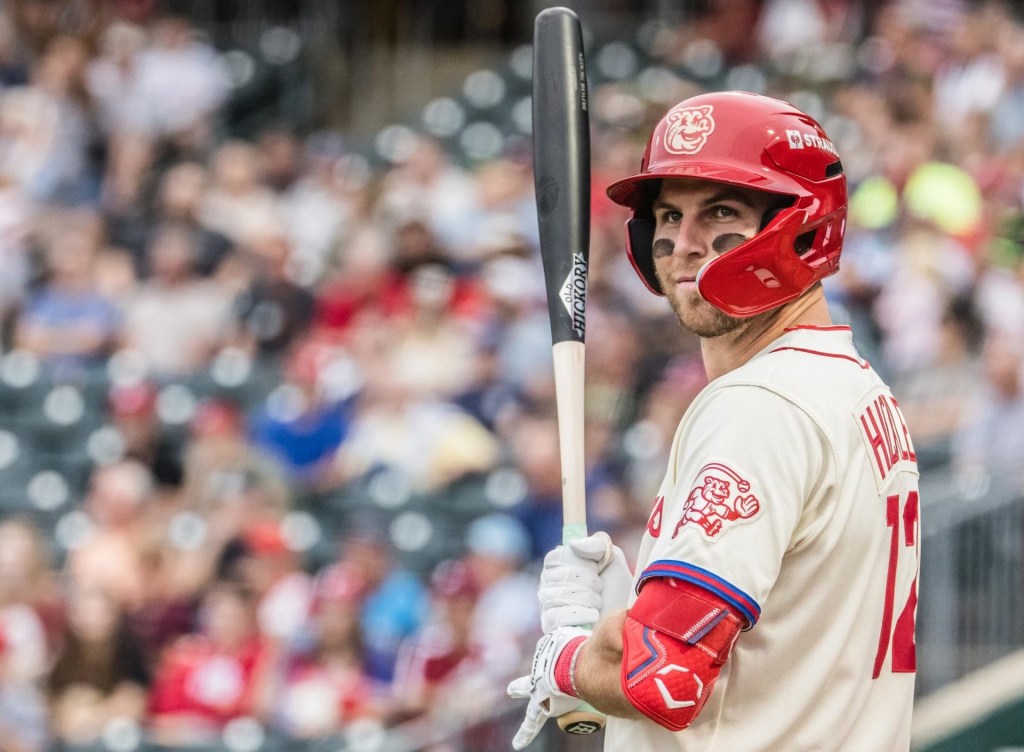
Without the red tape of pro leagues, newer, smaller teams can get creative with fauxbacks far more easily.
Last year, the Lehigh Valley IronPigs, the Phillies’ Triple-A affiliate that originated in 2008, hired designer Foose to turn their snarling pig logo into something family friendlier, as though it were plucked from the 1950s. “There’s been baseball now in South Pennsylvania since the 1880s,” Foose says. “How do you harken back to that old-school feel with something that is only 20 years old?” He landed on a grinning pig chasing after a pop fly; then he supplied the team with matching cream jerseys and pants with classic red lettering across the front.
“I would like to think that when you create a more neutral-focused look, it opens it up to any age and gender being kind of attracted to it,” Foose says. “Merchandise is easier to sell that way. … You might be selling it to the mom, who, at 42, goes, ‘I just need a fun-looking character.’ It just becomes a lot more approachable for every demographic if it kind of backs off a little bit from the kind of enraged mascot.”
The fauxback draws eyeballs—and judgment on both ends of the critical spectrum—but teams are also often making a wider play on throwback weekends beyond uniforms.
For the Giants, although their legacy uniforms weren’t huge sellers, the team still promoted the weekend around the 100th anniversary, creating their own 1925 lifestyle brand and bringing back nostalgic logos thanks to a partnership with Starter.
“We worked with a lot of these NFL licensees to make sure we had a lot of 100th-season products just because it’s a once-in-a-lifetime kind of celebration,” Shah says. Ultimately, with such an established brand, the fauxback uniform itself was “more of a complementary thing than it is a focal thing from a revenue standpoint.”
For the PLL, Rabil sees the opportunity as even bigger. The fauxback uniforms are part of a proof of concept for other future themes and design collaborations.
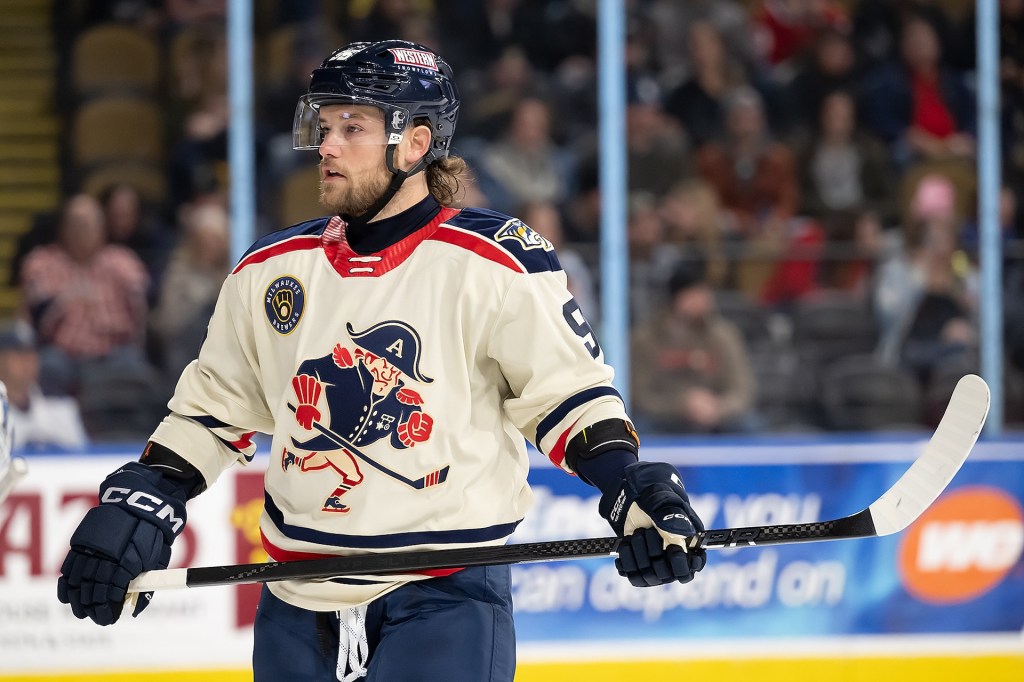
There’s a practical brand blueprint to follow, he says: Outside of a handful of traditionally minded teams (the Yankees, Notre Dame, etc.), “if you look at college and pro football in America, they’re more like auto manufacturers where they’re going to change the grill every four years,” Rabil says. He noticed a similar aesthetic game-plan with European soccer. “On a club-to-club basis,” he adds, “they’re rolling out new kits year over year.” He wants the PLL to do the same.
The weekend after the throwback games, PLL teams wore special-edition jerseys designed by two-spirit, Ojibwe artist Patrick Hunter, who crafted uniforms inspired by native artists to honor the sport’s indigenous roots. Rabil believes there’s plenty more to be done for the PLL—maybe an Olympic-themed fauxback to honor the sport’s history with the Games, or a crossover weekend that might include Disney franchise–themed uniforms to celebrate a Marvel or Star Wars movie release, now that ESPN has taken an ownership stake in the league.
“We’re always looking to drive cultural and commercial value to professional lacrosse,” Rabil says. “And we’re in this time over the last 12 to 16 months where nostalgia is really hitting with fashion—and it’s really working right now.”
